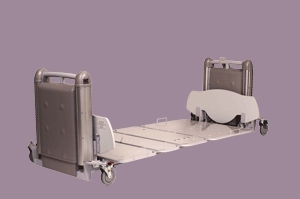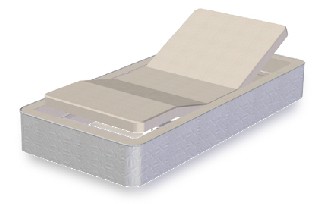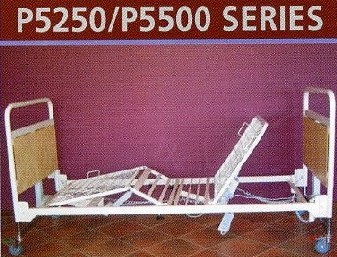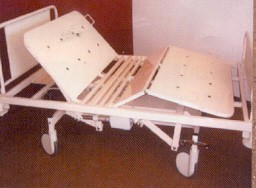Short Description
An electrically operated, four section bed, designed for home and hospital use. The bed lowers to a height of 115mm from the floor. It features adjustable backrest, knee break, tilting / Trendelenburg adjustment, and high / low bed height. Swivel castors allow for maneuvering of the bed. The bed is available in single bed size only.
| Specification |
Standard |
| Base Height (clearance) |
Unknown |
| Height |
Unknown |
| Length |
1945 mm |
| Load Capacity (supplier stated) |
165 kg |
| Width |
875 mm |
Additional Dimensions
Backrest angle...............0 degrees to 70 degrees
Thigh Angle..................0 degrees to 40 degrees
Tilt.........................-16 degrees to +16 degrees
More Details
Frame
A cream coloured, powder coated steel frame bed with a metal, slat base base
Headboard / Footboard
Hard, plastic headboard and footboard.
Mattress
The bed is available with a range of mattress options.
Motor
The motor is housed under the bed base
Controls
The hand held controls are Linak, soft press, switch style on a flexible cord
Safety Features
Low floor height reduces the risk of injury from falls.
Note:
- Knee break: leg section of bed elevates and bends at knee area
- Trendelenburg Tilt: allows the entire bed to tilt so a person's feet can be higher than their head. Reverse Trendelenburg tilts the bed in the opposite direction.
Factors To Consider
In certain circumstances there is an element of risk involved in the use of a bed pole or bed rail. All users require an initial risk assessment. A risk assessment should be undertaken in each circumstance of use. The Bed Pole or Bed rail should not be used in circumstances where there is a gap between the vertical components and the mattress. Users most at risk would include: those with physical limitations, cognitive impairment or a combination of both, or where the intended user's faculties are comprised by medication. Users should have the risk assessed prior to the prescription of a bed rail or bed pole.
Regular monitoring is recommended particularly where the condition is changing.
Standards
Some assistive technology needs to meet Australian or other standards. Standards may relate to materials, manufacturing and installation. Products that meet Australian or international standards will have written certification. To find out if a product meets Australian Standards ask the supplier to show you the certificate. For more information also see http://ilcaustralia.org.au/Using_Assistive_Technology/standards_regulation
Place Of Manufacture
Australia
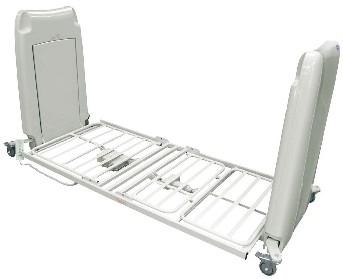


 subscribers
subscribers 

